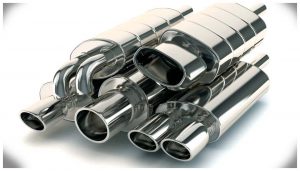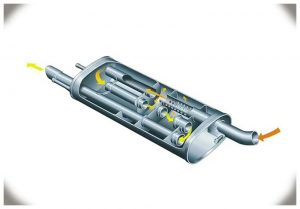
Types of Resonators and Their Benefits
There are two main types of resonators: straight-through (or unrestricted) resonators and chamber-style resonators. Straight-through resonators are designed with an inner core that contains small holes or louvers which allow gases to pass directly through it with minimal resistance. These types of resonators typically produce a louder exhaust note than chamber-style models due to their lack of restriction on the gas flow. Chamber style models use chambers or baffles to deflect high pressure pulses away from other parts in the exhaust system, creating less backpressure and a more muted exhaust note.
How Does A Resonator Work?

Effects Of Resonators On Sound Outputs
The effects of resonators on sound output vary depending on their type and size; as mentioned earlier, straight-through models tend to produce a louder sound than chamber style models due to their lack of restriction on the gas flow. Similarly, larger models tend to create louder notes than smaller ones due to their increased area for gas flow. While these devices can be used to make an already loud exhaust system even louder, they can also be used to reduce noise levels for those who prefer a more subtle exhaust note.
Conclusion
The resonator is an important component of the modern car’s exhaust system; it helps reduce back pressure, increase engine performance, and change the sound of the exhaust according to preference. There are two main types of resonators—straight-through and chamber style—each with its own benefits and drawbacks. Understanding how a resonator works and its effects on sound output ultimately helps drivers better customize their vehicle’s exhaust system for optimal performance, noise levels, and style.


Add Comment